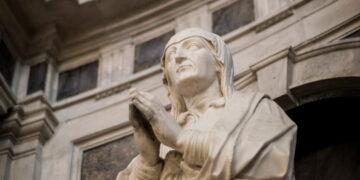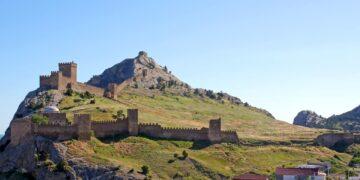Contents
Questo articolo è disponibile anche in:
During the reign of Suleiman I, between 1520 and 1566, the Ottoman Empire experienced one of its moments of maximum splendor and expansion. The sultan is also remembered for the great diplomatic relations he maintained and, above all, for the mediation work carried out with regard to Ottoman law, made up of religious and political laws. But during the same years, more than 120 years of intricate plots, intrigues, power games began: this era is known as the sultanate of women.
The beginning of the sultanate of women: Hürrem and Suleiman
Shortly after the beginning of the reign of Suleiman the Magnificent, a young red-haired girl who was destined to change the course of history entered the Topkapı Palace: Roxelana. Captured and enslaved by Tatar bandits, the beauty of the woman struck the young sultan, who changed the girl’s name to Hürrem (“the joyous”).
The concubine-ruler relationship changed in a short time, breaking all the rules established up to that moment. In fact, Hürrem gave birth to five children, four of whom were Şehzades (or “princes”). Until then, it was only allowed for each concubine to have only one child, then interrupting any relationship with the ruler.
The woman didn’t just become Haseki, or “favorite.” She also became the first concubine to be freed and officially married by a sultan, becoming his equal. In this position, Hürrem Sultana actively participated in her husband’s political and social life. She became her advisor and ally, while also working to favor her children otherwise destined to die, due to the terrible law of fratricide then in force: on the death of the sultan, the new regent had all possible pretenders to the throne killed..
That is why, erroneously, she was accused of advising Suleiman to execute Şehzade Mustafa, the sultan’s first son and her heir to the throne. In contemporary times, however, this accusation has been withdrawn. In fact, some letters have been found which actually certified the will of the son to unseat her father. The woman, on the other hand, is remembered as charitable and particularly attentive to the most unfortunate: there are still many structures dedicated to her today.
From Nurbanu to Turhan: the end of an era
When Suleiman died, Selim, son of the sultan and Hürrem, succeeded him. Given his father’s break with traditions, the new sultan also married with the former slave of Italian origins Nurbanu (“queen of light“). Since then, several women alternated in power games inside and outside the harem, covering various positions: from Haseki of the rulers to Valide Sultan, mothers of the sultans, secondary figures only to the padishahs.
Among the most influential figures, we certainly remember Kösem, wife of Ahmed I and regent for both his son Murad IV and his stepson, Osman II. Lastly, we remember Turhan Sultana: the woman to whom the order for Kösem’s murder is still attributed today.
Regent for her son, the future Mehmed IV, she is best remembered for the Yeni Cami, or Valide Sultan Mosque: the first imperial mosque built by a woman. The death of Turhan, in 1683, marks indicatively the end of the sultanate of women. An era certainly made up of numerous plots, never fully clarified, of which, however, wonderful buildings have remained, symbols of the power and influence of the sultans’ favorites.
Stay up to date by following us on Telegram!





















